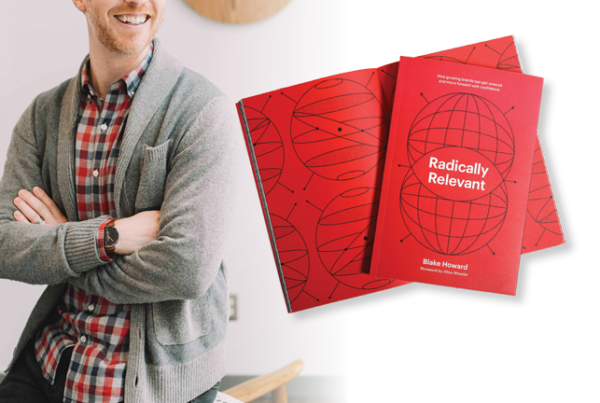While many marketers continue to rely on single-approach marketing tactics—email, search, direct mail—for many others, there has been a monumental shift toward a multi-channel approach, and with good reason. Multi-channel marketing campaign success has been well-documented and with the advancement of tracking, analytics, and reporting tools, a multi-channel approach is easy to plan and manage. Whichever side of the tracks you are on – you are either demonstrating marketing strategy prowess or marketing strategy mistakes.
Year-over-year, research has shown that few consumers are single-channel shoppers anymore. According to a Harvard Business Review study, 73% of consumers use multiple (three on average) channels to research a product or brand before they make a purchase. Why is this good news for retailers and marketers? According to the same study, the more channels a consumer uses, the more valuable they are—spending an average of 4% more on every in-store shopping experience and 10% more online than single-channel consumers. And with every additional channel they used, they spent more money in the store. For retail, the statistics go on to include 23% more repeat shopping visits to the retailer’s stores (loyalty) and a higher propensity (brand advocacy) to recommend a brand to family and friends than those who used a single channel. And, not be overlooked, the value of the data points collected on your audience from different channels can be used to develop future offers, messaging, and entire campaigns. Let’s explore ways marketers can expand their campaigns into the multi-channel world.
Informed Delivery Transforms Direct Mail into Multi-channel Marketing
Direct mail has risen to the top as an effective marketing tool to drive consumers to digital information. Marketers use engagement responses such as coupon codes, personal URL’s, or QR codes to connect physical mail pieces to online videos, landing pages, shopping sites, reviews, and contests. The postal service delivers physical mail to customers without the filters and obstructions common with digital communication channels. Mail is a perfect starting point for businesses seeking to take advantage of multi-channel marketing benefits.
A straightforward way to connect physical mail and digital content is with Informed Delivery® (ID) from the US Postal Service. ID scans every piece of mail that enters its system, and emails consumers digital images of the mail that will arrive in their mailboxes each day. Over 20 million households have subscribed to the free Informed Delivery service. Marketers can leverage this technology by attaching a digital marker to their direct mail, transforming the black and white scan image to a four-color clickable image that is emailed to the registered recipient. This image becomes a digital ad that promotes the content in the soon-to-be-delivered mail. Mailers can double their impressions and send customers directly to destinations such as donation pages, signup forms, special sales, or grand opening messages with no added postage costs. Think of it as a “two for one”! The best part? Informed Delivery is a complimentary service from the USPS. Mailing experts at Bolger Printing can help you add ID to your direct mail campaign, making it instantly multi-channel!
(NOTE: During special promotional periods, mailers can even earn a postage credit on qualifying Informed Delivery campaigns. Ask us for details.)
Social Media Connected to Website
Posting relevant social media content that includes links back to your website is a simple, uncomplicated way to communicate over multiple channels, but it must be part of a coordinated social marketing plan. You can use social networks to present special offers to your loyal followers, connecting them to a landing page on your website with additional data capture points. Lead capture forms can collect additional information (such as an email address) in return for a valuable discount or limited-time offer. It can also offer an opportunity to share the unique offer with their friends and family, creating a referral program.
Don’t forget about the social part of social media marketing. Utilizing it as a broadcast medium is the baseline use of social media, but you can raise lead quality by monitoring your social networks, responding to inquiries, participating in discussions, and interacting in other ways. This aspect of social media requires human interaction—preferably someone comfortable with social networking and time to monitor, manage, and respond on your social networks every day.
Email Marketing and Multi-channel Campaigns
Once you’ve acquired email addresses via lead capture forms on your website, you’ve opened yet another marketing channel. Use the email address for the delivery of digital newsletters or email drip campaigns that further promote additional content and offers.
Many organizations can be successful at promoting their brands and developing leads using their website, direct mail, email, and social media. The costs are minimized by using your creative assets in multiple ways. Re-using content also ensures your branding and presentation is consistent across all channels.
Multi-channel marketing can be as complex or simple as you’d like to make it. If you’re just starting out, keep the effort small and manageable to avoid being overwhelmed with too many inter-related communication channels. Develop content that supports your marketing tactics across multiple channels and then use that content to fuel your channel strategies. The marketing experts at Bolger can help you map out a cross-channel marketing strategy that supports each individual marketing goal you have. Give us a call and let’s put together a time to hear what your sales, fundraising, or recruitment goals are, and we’ll help build a plan to support it.
Are you in charge of the next print campaign?
Our helpful Print 101 eBook will be the perfect start.
Download free eBook







